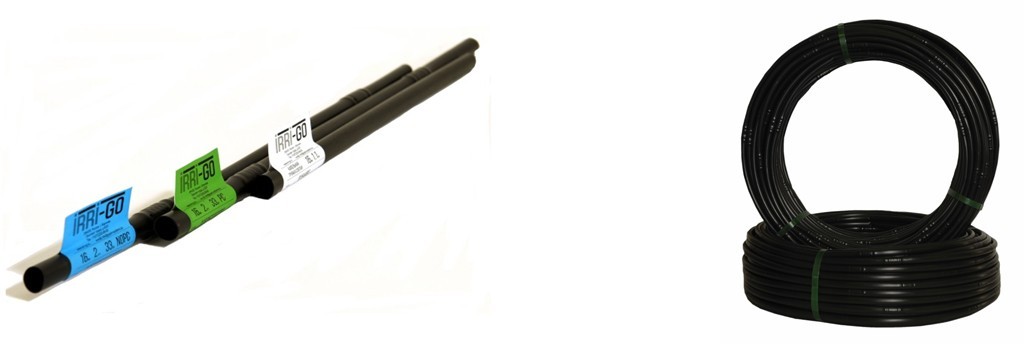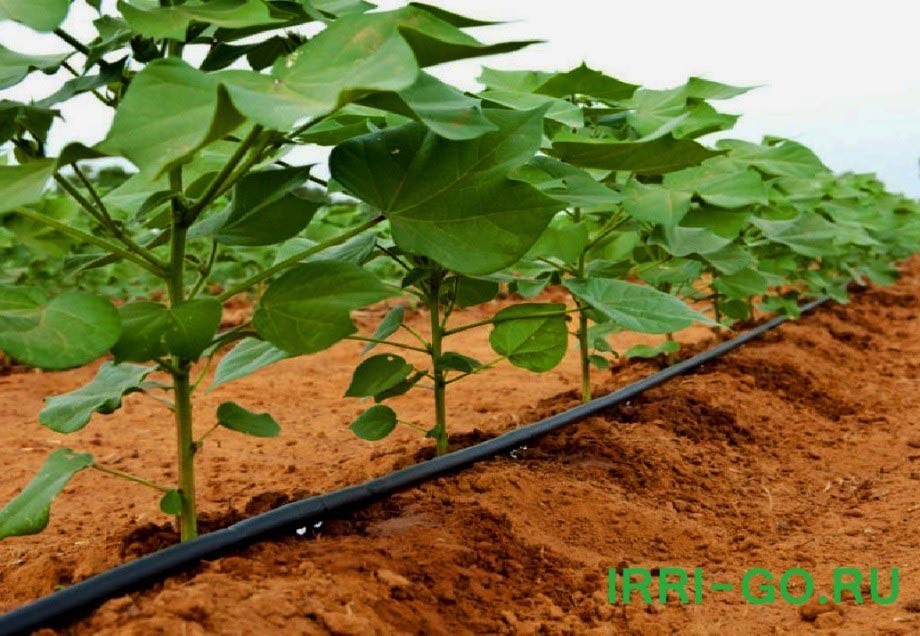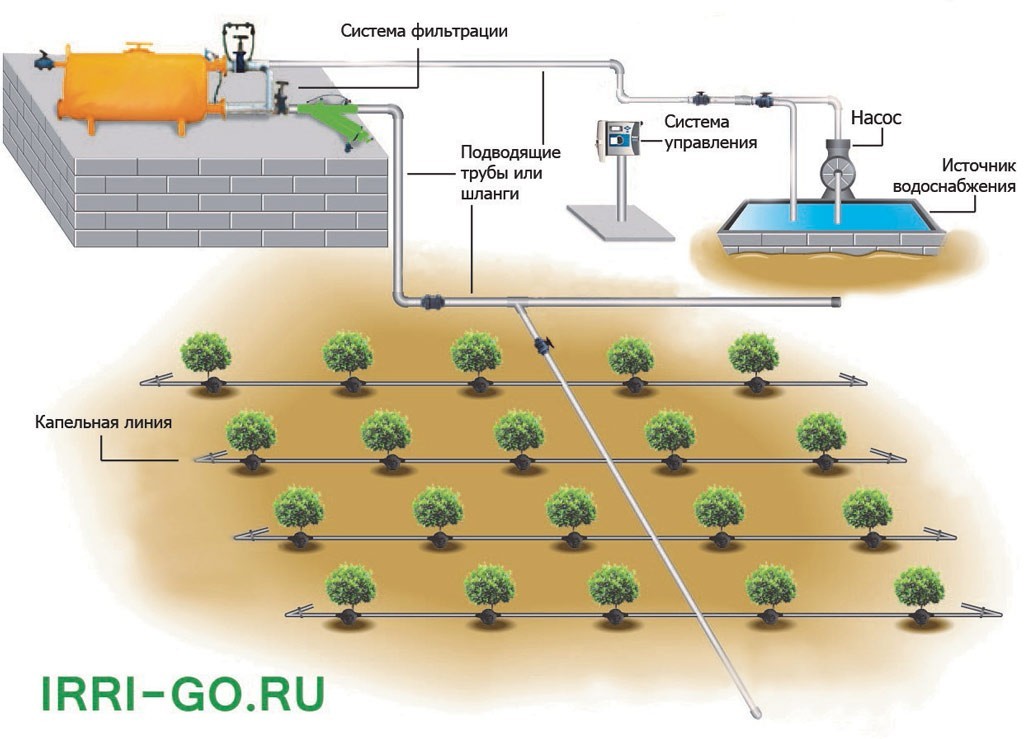Drip irrigation
Drip irrigation is the pouring of water onto the soil at a very low rate (1-8 liters per hour) from a system of small diameter plastic pipes with outlets called emitters or drippers. Water gets into the root zone of plants, so that only part of the soil in which the roots grow, wetted, unlike surface irrigation which moistens the entire surface of the soil.
When using drip irrigation every 1-3 days will provide a very high level of moisture in the soil, unlike other methods of irrigation, which is very beneficial to the development of plants.
Drip irrigation is most in demand for ordinary crops-vegetables, fruits, fruit trees and shrubs, vineyards, where for each plant can be used as one or several droppers.
Drip irrigation is suitable for most soils. On clay soils, water should be introduced slowly, on sandy soils, higher rates of emitter discharge will be required to provide the necessary soil wetting.
One of the main problems with drip irrigation is the clogging of emitters. All droppers have very small water paths with a diameter of 0.2-2.0 mm, so if the water contains algae, fertilizer deposits and dissolved chemicals that are deposited, it is necessary to install a filtration system.
Scheme of drip irrigation system
A typical drip irrigation system consists of the following components:
- water supply source (well, reservoir, natural reservoir);
- pump;
- filtration system;
- control system;
- supply pipes or hoses;
- cable line.
Pump - takes water from the water supply source to supply the pipe system with the required amount of water at the required pressure.
Filtration system - is used for purification from different degree of water pollution. Types of filters – mesh, disc and sand-gravel. Most often, after the filtration system, injectors or fertilizer dispensers are installed. They slowly add a measured dose of fertilizer to the water during irrigation. This is one of the main advantages of drip irrigation compared to other methods.
The control system consists of electromagnetic valves to control the irrigation zones, a controller that controls them and additional sensors (soil moisture, rain or weather station).
Supply pipes or hoses deliver water to the consumer – drip tube. They are usually made of PVC or HDPE and must be laid underground, as they begin to break down in direct sunlight.
The drip line is a tube with a diameter of 16 mm with built-in droppers, which are located at a distance of 20 cm to 100 cm from each other with one or more holes, serving to pour water from each dropper 1-8 l/h, most often used for plants, shrubs and trees. For other crops, a tube with often located emitters is used to wet a whole strip of soil. Many different emitter designs have been produced in recent years. But the most important is to create a dropper that provides a constant flow of water, not much different from the pressure changes and has a high resistance to clogging.
Drip irrigation system organized from the tube with emitters is a multi-year. Thus, it can be easily automated. This is necessary, because the systematic switching on and off of irrigation requires a constant finding of a person, which forces to be constantly "tied" to the system, or leads to the hiring of an employee, and this is not economically profitable.
Daily drip irrigation provides very favorable conditions for the growth of crops. But it is very important to keep this in mind, because this type of irrigation leads to the development of only small roots, which can adversely affect the harvest.
Unlike surface irrigation with sprinklers, drip irrigation only moistens part of the root zone of the soil. This takes at least 30% of the total volume of soil moistened in other ways. The moistened spot that is formed from dripping water onto the soil depends on the type of drip emitter and soil composition.
Despite the fact that drip irrigation occurs at the root zone of plants, it is important to satisfy all the crop's need for water. Crops simply require the right amount of water for good growth.
Saving water, which is obtained by using drip irrigation-a reduction in water flow deep into the earth, surface runoff and evaporation from the soil surface.
Drip irrigation does not replace other proven irrigation methods. This is another way of correct and economical use of water. It is best suited for hilly or mountainous areas, with high water scarcity and high cost.








